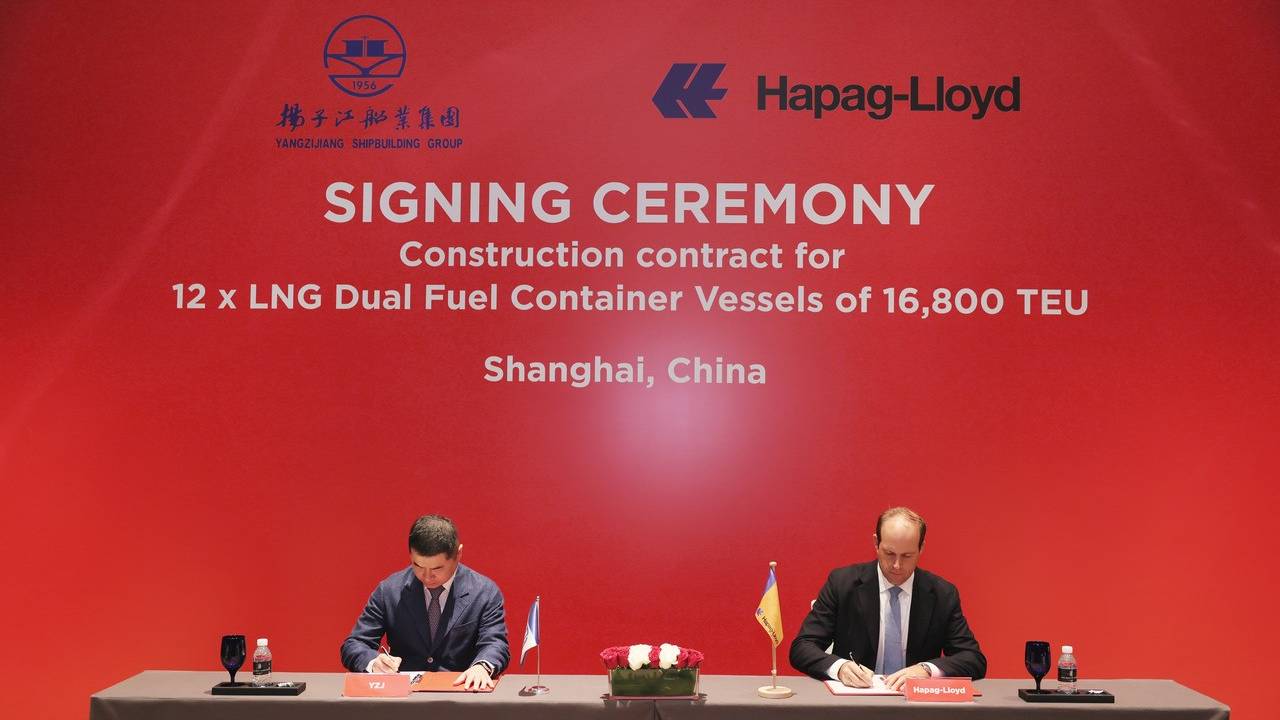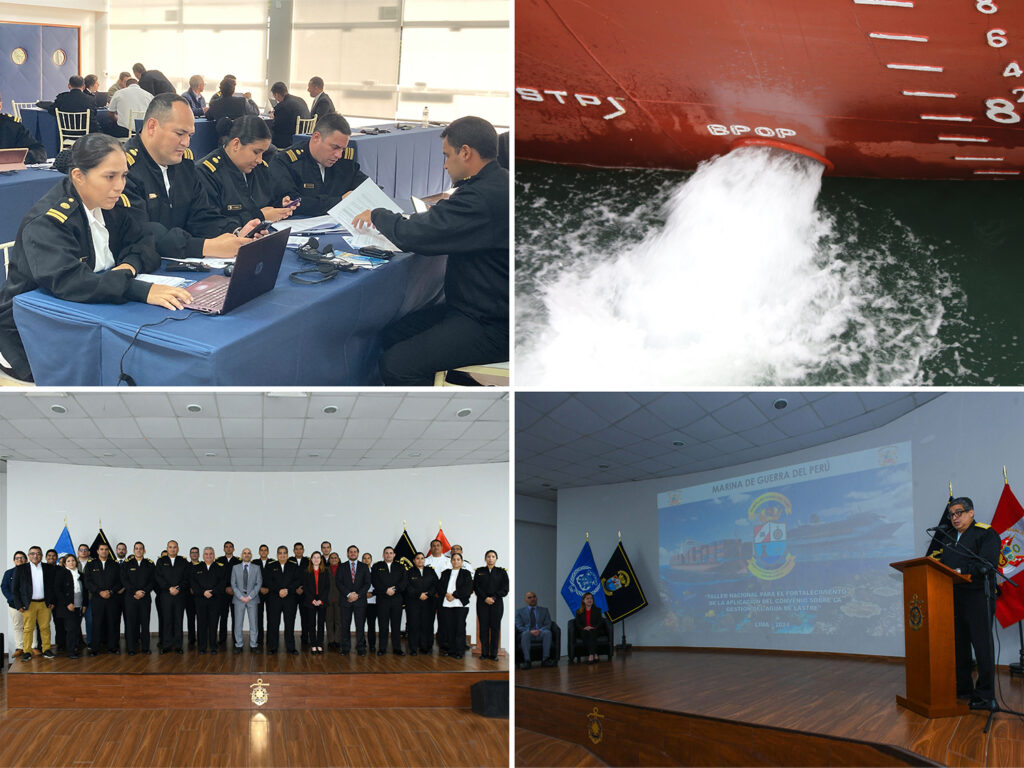-
Ships will feature liquefied gas dual-fuel propulsion and be ammonia-ready
-
Deliveries between 2027 and 2029
-
Investment volume of roughly USD 4 billion
-
Rolf Habben Jansen: “We will continue to modernize and decarbonize our fleet.”
Hapag-Lloyd has signed two contracts with two Chinese shipyards for a total of 24 new container ships. Of these, 12 newbuildings – each with a capacity of 16,800 TEU – will be built by Yangzijiang Shipbuilding Group.
Expand the capacity of services
These units will be used to expand the capacity of services that are already in place. An additional 12 ships, each with a capacity of 9,200 TEU, have been ordered from New Times Shipbuilding Company Ltd. and will replace older units in the Hapag-Lloyd fleet that will be nearing the end of their service life in this decade.
Newbuildings will be equipped
All of the newbuildings will be equipped with state-of-the-art low emission high pressure liquefied gas dual-fuel engines that are extremely fuel-efficient. In addition, these vessels can be operated using biomethane, which can reduce CO2e emissions by up to 95% compared to conventional propulsion systems.
Investment volume of around USD four billion.

The new ships will also be ammonia-ready. Hapag-Lloyd will take delivery of the new vessels between 2027 and 2029. The newbuildings will have a combined capacity of 312,000 TEU and involve a combined investment volume of around USD four billion. A long-term financing of USD three billion has already been committed.
One of the largest in the recent history
“This investment is one of the largest in the recent history of Hapag-Lloyd, and it represents a significant milestone for our company as it pursues the goals of its Strategy 2030, such as to grow while also modernizing and decarbonizing our fleet.
A global, high-quality product
Operating a fleet of more efficient vessels will also enhance our competitive position, and thanks to the increase in capacity, we will continue to offer our customers a global, high-quality product,” said Rolf Habben Jansen, CEO of Hapag-Lloyd AG.

Hapag-Lloyd is fully committed to the 1.5-degree target of the Paris Agreement. By 2030, the absolute greenhouse gas emissions of the company’s fleet operations are to be reduced by around one third compared to 2022 – in what will be another step toward net-zero fleet operation by 2045
Investing in modern, efficient newbuildings

This ambitious goal will be achieved by investing in modern, efficient newbuildings, slow steaming, fleet modernization and the use of new propulsion technologies and alternative fuels, which will allow customers to benefit from multiple green transport options at the same time.
Considering the recent investment decision announced on April 16 of this year to retrofit five vessels to methanol propulsion, this investment is another step in Hapag-Lloyd‘s efforts to prepare itself for a multifuel future and to drive the decarbonization of the liner shipping industry.
287 modern container ships
Hapag-Lloyd controls 287 modern container ships with a total transport capacity of 2.2 million TEU. This makes the company one of the world’s leading liner shipping companies. In addition, it operates the largest fleet sailing under the German flag.
Read more :
Hapag-Lloyd christens the “Hamburg Express” in Hamburg
Maersk and Hapag-Lloyd announce two ocean network options
New eco-friendly ships help Hapag-Lloyd overcome bottleneck
Hapag-Lloyd announces PSS from Türkiye to Morocco and Africa




